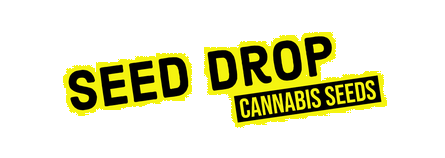Comprehensive Guide on Marijuana Pruning: Topping vs. Fimming
Introduction
Pruning is a crucial technique in cannabis cultivation used to manage plant growth, increase yields, and improve overall plant health. Two popular pruning methods are topping and fimming. Both techniques help create a more manageable plant structure and enhance bud production, but they achieve these goals through different approaches. This guide will explore the differences between topping and fimming, their benefits, and how to perform each technique effectively.
Chapter 1: Understanding Topping
1.1 What is Topping?
Topping is a pruning technique that involves cutting off the top part of a cannabis plant to promote the growth of multiple colas (main buds) instead of just one. By removing the central stem, the plant is encouraged to develop side branches that will grow into new main colas, leading to a bushier plant with increased yield potential.
1.2 Benefits of Topping
- Increased Yields: By creating multiple colas, topping can significantly increase the number of buds and overall yield.
- Improved Light Distribution: A bushier plant with multiple colas allows for better light penetration, improving bud development.
- Enhanced Plant Structure: Topping helps create a more even canopy, making it easier to manage and train the plant.
1.3 How to Perform Topping
- Choose the Right Time: Topping is best performed during the vegetative stage when the plant has developed 4-6 nodes. Avoid topping during the flowering stage as it can stress the plant.
- Prepare Your Tools: Use clean, sharp scissors or pruning shears to make a clean cut.
- Make the Cut: Identify the top node (the highest point of growth) and cut just above it, leaving a small stump. Be careful not to damage the surrounding leaves or branches.
- Monitor Recovery: After topping, allow the plant to recover and focus on growing new side branches. This may take a week or two.
Chapter 2: Understanding Fimming
2.1 What is Fimming?
Fimming (or “FIM” which stands for “Fuck I Missed”) is a pruning technique similar to topping but involves removing only a portion of the top growth. Instead of cutting off the entire top node, you cut approximately 75% of it. This method stimulates the plant to grow multiple new tops, creating a bushier plant with more colas.
2.2 Benefits of Fimming
- Increased Colas: Fimming often results in more than two new tops, which can further increase yield potential.
- Less Stress: Fimming generally causes less stress compared to topping because less of the plant’s growth is removed.
- Enhanced Growth: Fimming can stimulate vigorous growth and branching, creating a more robust plant structure.
2.3 How to Perform Fimming
- Choose the Right Time: Fimming should be done during the vegetative stage when the plant has at least 4-6 nodes. Avoid fimming during flowering to prevent stress.
- Prepare Your Tools: Use clean, sharp scissors or pruning shears for a precise cut.
- Make the Cut: Identify the top node and cut about 75% of it, leaving a small portion of the growth. This will stimulate the plant to grow multiple new tops.
- Monitor Recovery: Allow the plant to recover and grow the new tops. This process may take a week or more.
Chapter 3: Comparing Topping and Fimming
3.1 Key Differences
- Extent of Removal: Topping involves removing the entire top node, while fimming involves removing only a portion of it.
- Number of New Tops: Topping typically results in two new main colas, while fimming often results in multiple new tops.
- Stress Level: Fimming generally causes less stress to the plant compared to topping due to the smaller amount of growth removed.
3.2 Choosing the Right Technique
Choosing between topping and fimming depends on your specific goals and plant characteristics:
- Use Topping When: You want to create a more manageable plant structure with fewer but larger colas. Topping is ideal for growers looking to control plant height and create an even canopy.
- Use Fimming When: You want to create multiple new tops with less stress. Fimming is suitable for growers seeking to maximize bud sites and encourage vigorous growth.
Chapter 4: Post-Pruning Care
4.1 Recovery and Monitoring
- Observe Plant Health: After pruning, closely monitor your plant for signs of stress or slow recovery. Ensure it is receiving adequate nutrients and water.
- Adjust Light and Environment: Make necessary adjustments to light and environmental conditions to support the plant’s recovery and new growth.
4.2 Adjusting Nutrients
After topping or fimming, consider adjusting your nutrient regimen to support new growth. Ensure the plant receives a balanced mix of nutrients to promote healthy development of the new tops and branches.
Chapter 5: Troubleshooting Common Issues
5.1 Common Problems
- Branch Breakage: If branches break or become weak, use plant tape or ties to support and stabilize them.
- Slow Recovery: If the plant shows slow recovery, ensure it is receiving optimal nutrients and environmental conditions.
- Stress Symptoms: Look for signs of stress such as drooping leaves or stunted growth. Adjust training techniques and provide appropriate care to help the plant recover.
5.2 Preventive Measures
- Gentle Handling: Handle the plant gently during pruning to avoid unnecessary stress and damage.
- Proper Timing: Perform topping or fimming at the right stage of growth to minimize stress and maximize effectiveness.
Conclusion
Both topping and fimming are effective pruning techniques for managing cannabis plant growth and enhancing yields. Topping creates a more controlled plant structure with fewer, larger colas, while fimming promotes multiple new tops and vigorous growth. Understanding the differences between these techniques and applying them appropriately will help you achieve a healthier and more productive cannabis crop. With proper care and attention, you can maximize your yields and enjoy a successful grow.
